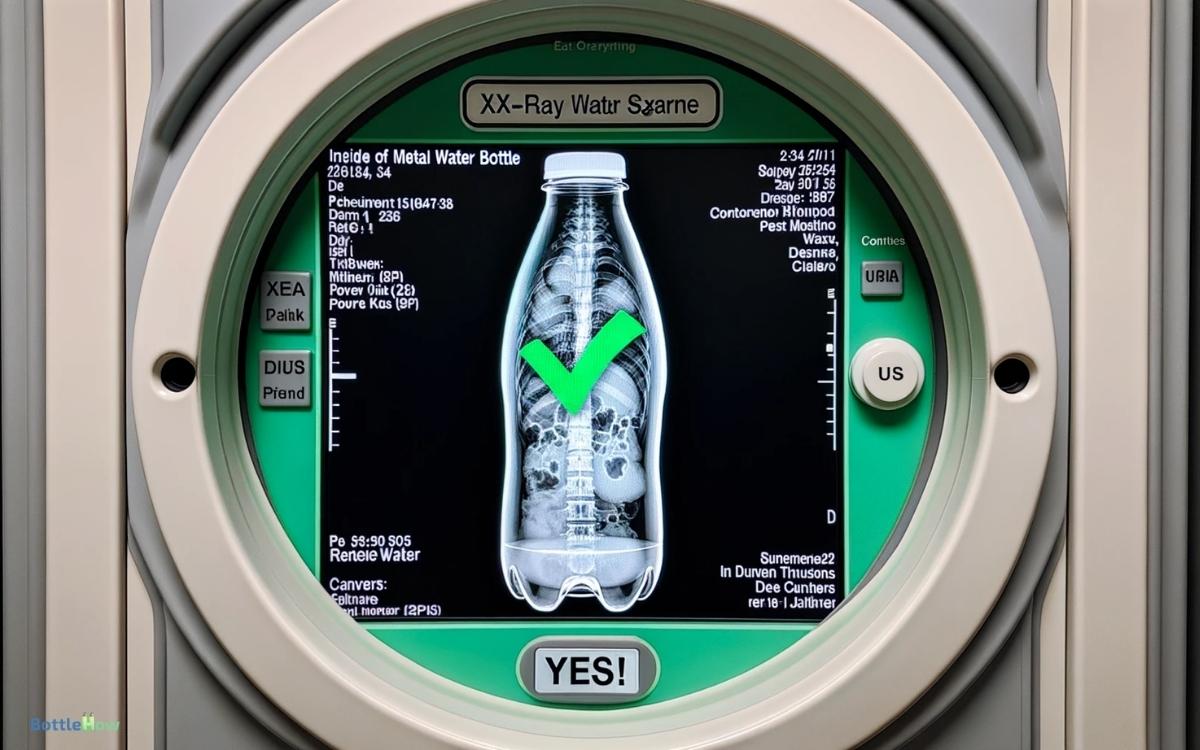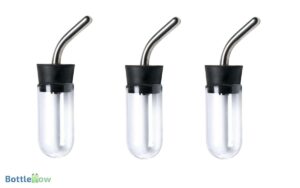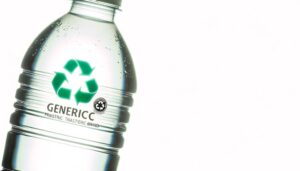Can X Ray See Through Metal Water Bottle? Yes!
X-rays can’t effectively see through metal water bottles. The metal’s high density and atomic number greatly impede X-ray penetration due to increased absorption and scattering.
This results in the metal casting a shadow on the X-ray image, making it difficult to visualize any contents inside.
In security scans, this limitation means additional screening methods are necessary to identify potentially hazardous materials. The thickness and type of metal, such as stainless steel, further influence X-ray visibility.
Understanding these interactions is critical for accurate imaging and efficient security protocols. Continuing, you’ll uncover more about how these factors affect various X-ray applications.

Key Takeaways
How X-Rays Work
X-rays work by emitting high-energy electromagnetic waves that can penetrate various materials, making them essential for medical imaging and other applications.
When you use an X-ray machine, it produces a controlled beam of these waves. As this beam passes through the object, different materials absorb the X-rays at varying degrees.
This differential absorption allows you to create a detailed image based on the density and composition of the materials.
For instance, bones absorb more X-rays than soft tissues, resulting in a clear contrast on the X-ray film.
This principle isn’t limited to medical uses; it also extends to industrial and security applications, where X-rays help inspect the internal structure of objects without causing damage.
Metals and X-Ray Penetration
Metals, due to their high density and atomic number, greatly impede the penetration of X-ray beams.
When X-rays encounter metal objects, their high atomic numbers cause significant scattering and absorption of the X-ray photons. This results in a substantial reduction in the X-ray beam’s intensity as it passes through the metal.
You’ll notice that thicker and denser metals, like lead or steel, block more X-rays compared to lighter metals such as aluminum.
This blocking effect creates a shadow or opaque area on the X-ray image, rendering the interior details behind the metal object difficult to discern.
Understanding the interaction between X-rays and metals is essential for interpreting X-ray images accurately, especially when evaluating objects encased in metal.
Water Bottles in Security Scans
When you pass a water bottle through a security scanner, the liquid inside can obscure the X-ray image, making it challenging to identify the contents accurately.
Security scanners rely on X-rays to differentiate materials based on their density and atomic number.
Liquids, especially in metal containers, can produce ambiguous results. The metal exterior of the bottle also complicates the scan by blocking or scattering X-rays, further obscuring the image.
Security personnel use different techniques, such as additional screening methods or manual inspections, to mitigate these issues.
Understanding this process helps you appreciate why certain items undergo extra scrutiny. It’s not merely about the bottle but ensuring the safety of everyone by accurately identifying potentially hazardous contents.
Factors Affecting X-Ray Visibility
Several factors greatly impact the visibility of objects in X-ray scans. These factors include the material’s density, thickness, and atomic number.
When you examine a metal water bottle, its high density and atomic number make it more challenging for X-rays to penetrate.
Denser materials absorb more X-ray photons, reducing the beam’s transmission through the object.
Additionally, the thickness of the metal adds another barrier, requiring higher energy X-rays for adequate penetration.
Metals like stainless steel have high atomic numbers, meaning they’re more effective at scattering or absorbing X-rays.
These properties collectively make it difficult for standard X-ray machines to see through metal water bottles, necessitating adjustments in X-ray energy or alternative imaging methods to achieve clear visibility.
Real-World Applications
In practical settings, the limited penetrability of X-rays through metal water bottles poses significant challenges for security screening and medical imaging.
When scanning luggage at airports, X-ray machines struggle to see through metal water bottles, potentially concealing hazardous items.
Similarly, in medical imaging, metal containers can obscure diagnostic details, complicating accurate assessments. These issues demand innovative solutions for effective X-ray utilization.
- Security Screening: Metal water bottles can hide contraband or explosives, requiring secondary inspections.
- Medical Imaging: Metal objects interfere with clear imaging, necessitating repositioning or alternative methods.
- Industrial Applications: In manufacturing, metal components may obstruct quality control processes.
Understanding these challenges helps develop better technologies and protocols, ensuring safety and accuracy across various fields.
Conclusion
So, you’ve seen how X-rays work and how metals affect their penetration. While X-rays can struggle with thick metals, they usually see through standard metal water bottles. Imagine you’re at an airport; security scans your bottle, easily identifying any hidden contents.
Factors like bottle thickness and material composition play a role, but generally, X-ray technology is effective in real-world applications, ensuring safety and security without invasive inspections.





